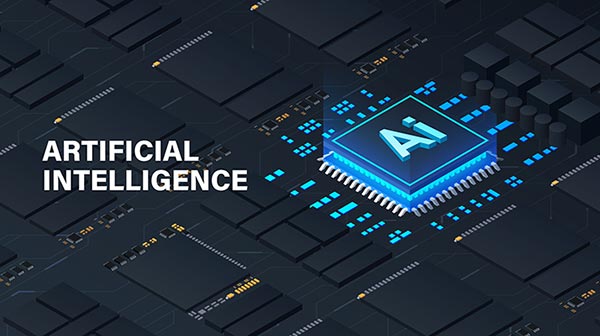
The Rise of AI Hardware: Enabling Deep Learning at Scale
You know that artificial intelligence has been making breakthroughs
recently, from self-driving cars and automated assistants to systems that can
generate realistic images or beat humans at complex strategy games. But have
you wondered how AI systems are physically able to do all these complex tasks?
The truth is, that AI wouldn't be possible without specialized computer
hardware designed specifically for machine learning and deep learning
workloads. Whether it's powerful graphics cards, custom chips from companies
like Google and NVIDIA, or new exotic designs still on the horizon, AI hardware
is enabling artificial intelligence at a massive scale.
AI Accelerators: GPUs, TPUs, and ASICs Powering Deep Learning
AI accelerators like GPUs, TPUs, and ASICs have enabled the recent success of deep learning. These specialized hardware solutions provide the massive computing power required for machine learning models to learn from huge datasets.
GPUs or graphics processing units were originally designed for gaming but
researchers found they worked well for neural network training too. NVIDIA GPUs
have become the most popular option for deep learning. Google's Tensor
Processing Units or TPUs are custom chips optimized specifically for machine
learning workloads. TPU pods with thousands of chips are used to train Google's
largest AI models.
Application-specific integrated circuits or ASICs are customized chips
tailored to run certain deep learning algorithms extremely efficiently. Several
startups are developing ASICs for on-device inference, allowing AI models to
run locally on smartphones and IoT devices with low power consumption.
While GPUs and TPUs are more flexible, ASICs can provide major performance
and efficiency gains for specific use cases. As deep learning models become
increasingly complex, specialized AI accelerators enable them to run in a
feasible time. Advancements in AI hardware will continue enabling progress in
artificial intelligence for years to come.
The rise of AI accelerators has been crucial to the recent success of deep
learning and will power further breakthroughs as models become more advanced
and data-hungry. With customized hardware, on-device inference, and efficiency
gains, deep learning is scaling rapidly and reaching more applications. The future
is bright for AI thanks to these specialized computing solutions.
Neural Network Hardware: Requirements for Training and Inference
To train and run neural networks, you'll need some serious computing power.
GPUs, or graphics processing units, have become the go-to hardware for many AI
applications. Originally designed for gaming, GPUs contain
thousands of cores that can perform matrix multiplications extremely
efficiently, a key requirement for neural network training and inference.
Major cloud providers like AWS, Google Cloud, and Azure all offer GPU
instances for machine learning workloads. If you want to build your machine,
look for high-end GPUs from NVIDIA, like the A100 or V100. These provide tens
of thousands of CUDA cores and hundreds of Tensor cores designed specifically
for deep learning.
For even more power, Google developed its own Tensor Processing Units or
TPUs. TPUs can provide up to 100 petaflops of performance for training the
largest models. However, TPUs are only available on Google Cloud.
FPGAs, or field programmable gate arrays, are another option. FPGAs can be
reprogrammed at the hardware level to optimize for specific workloads. Some
companies offer FPGA cards that provide high throughput for running trained AI neural
networks. FPGAs tend to require more engineering effort to implement but can
provide performance gains over GPUs for some applications.
As models get larger and more complex, new specialized AI accelerator chips
are emerging. Neuromorphic chips aim to mimic the human brain. And quantum
computers could someday simulate quantum mechanical processes to solve certain
problems intractable for classical computers. The future is bright for AI computer
hardware.
AI Workload Management: FPGA and ASIC
Solutions
FPGA (Field-Programmable Gate Array) and ASIC
(Application-Specific Integrated Circuit) technologies can help with AI
workload control. FPGAs are reconfigurable, allowing for the efficient
acceleration of a wide range of AI activities. They can adapt to changing AI
workloads dynamically, optimizing performance and battery consumption. ASICs,
on the other hand, are custom-designed for certain AI algorithms and provide
unrivaled performance and power efficiency. While FPGAs thrive in terms of
flexibility, ASICs excel in terms of sheer processing capability. A balanced
strategy might include FPGA-based solutions for flexible workload modifications
as well as ASICs for high-throughput, mission-critical operations, resulting in
a comprehensive and adaptable AI workload management ecosystem.
The Future of AI Hardware: Neuromorphic Chips, Quantum Computing and Edge
AI
The future of AI hardware is exciting yet complex. Several emerging
technologies are poised to enable machine learning at an unprecedented scale.
Neuromorphic Chips
Neuromorphic chips are inspired by the human brain. They contain interconnected artificial neurons that can learn and adapt over time. Companies like Intel and IBM are developing neuromorphic chips that could enable machine learning with high energy efficiency and speed. However, they are still in early research and development.
Quantum Computing
Quantum computers leverage the properties of quantum mechanics to solve complex problems that are intractable for classical computers. Companies like Google, IBM, and Rigetti Computing are building quantum computers that could someday run machine learning algorithms. While quantum computing is promising, the technology remains in its infancy and may still be many years away from enabling broad AI applications.
Edge AI
Edge AI refers to machine learning that happens on or near the device, rather than in a data center. Companies are developing low-power AI chips and algorithms that can run locally on smartphones, sensors, and other edge devices. Edge AI hardware could enable features like real-time computer vision, voice control, and personalized machine learning -- all with low latency while protecting user privacy. However, edge AI hardware also faces challenges related to cost, computing power, data management, and model optimization for resource-constrained environments.
The future of AI hardware is promising but difficult to predict. While technologies like neuromorphic computing, quantum computing, and edge AI could transform machine learning, they face technical hurdles and uncertainties. Still, with continued progress, these technologies may enable artificial general intelligence and other breakthroughs we can only imagine today. The rise of AI hardware will likely shape our future in surprising and profound ways.
Conclusion
So there you have it, an overview of how AI hardware is evolving to keep up
with the increasing demands of machine learning models and neural networks.
GPUs and TPUs have become the workhorses for training complex deep-learning
models. FPGAs and ASICs provide specialized solutions for inference at the
edge. Looking ahead, neuromorphic chips and quantum computing promise to take
AI to the next level.
As AI continues its rapid advancement, the hardware that powers it will need
to progress even faster. But with many brilliant minds working on the problem
and companies investing heavily in the space, the future of AI hardware looks
very bright. The key will be continuing to push the boundaries of silicon-based
chips while exploring alternative architectures. If the progress we've
witnessed so far is any indication, AI hardware will be more than up to the
task.
